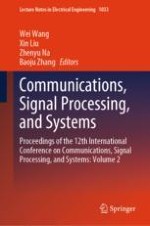2024 | Buch
Communications, Signal Processing, and Systems
Proceedings of the 12th International Conference on Communications, Signal Processing, and Systems: Volume 2
herausgegeben von: Wei Wang, Xin Liu, Zhenyu Na, Baoju Zhang
Verlag: Springer Nature Singapore
Buchreihe : Lecture Notes in Electrical Engineering
